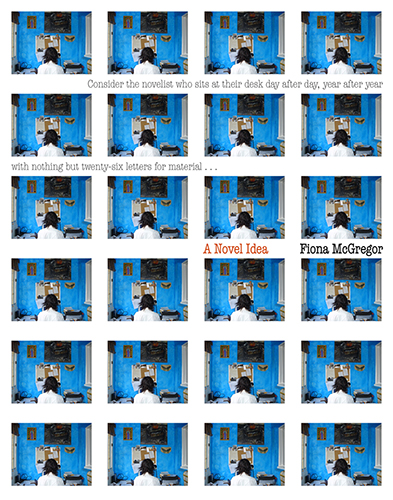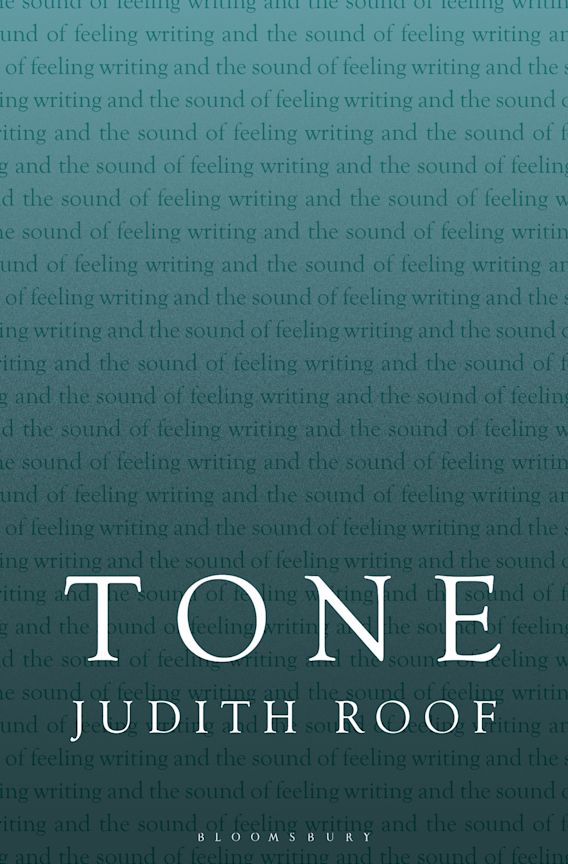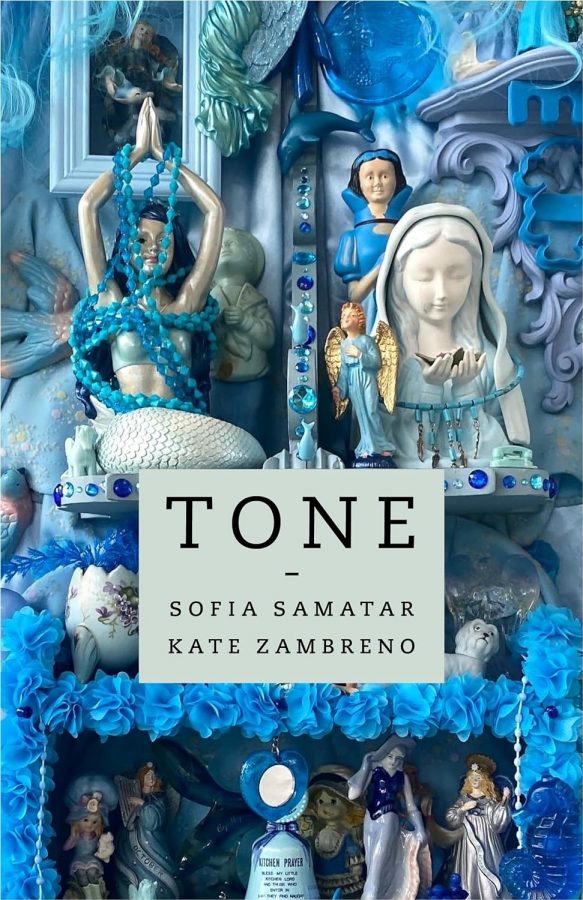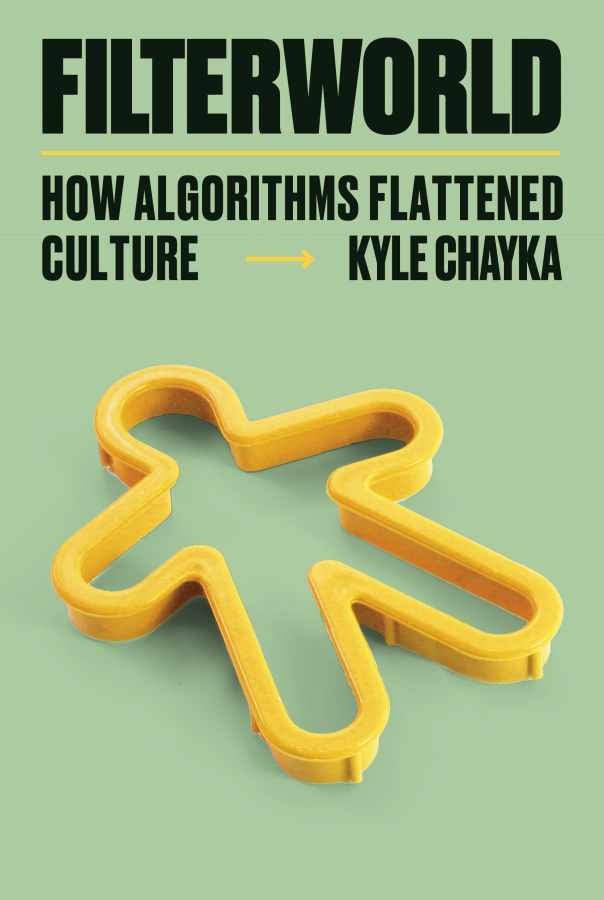One morning I listened to Fiona McGregor talk about her writing on a podcast as I washed a dusty pink cashmere sweater I bought from an op shop for five dollars. Although it was before nine and I was still at home, I had started work for the day. Multitasking by doing laundry and listening to a podcast felt legitimate to classify as ‘on the clock’ because of several factors: the time and day of the week (Monday, 8.45am), the match between the manual activity and a key theme in my current research (housework) and, primarily, the direct relationship between the podcast and my task for the morning (drafting this review of McGregor’s A Novel Idea). While a complicated, informal, internal algorithm determined the legitimacy of this action, I felt justified nonetheless. Even if the difference between work and life is only ever one of degree, I won’t tell HR.
A Novel Idea is a photo essay that documents the process of writing the novel Indelible Ink under, to quote McGregor’s own description, ‘the rubric of endurance performance’. The photos are mostly of the back of McGregor’s head as she sits at a desk, writing. There is the odd detailed study of a view out the window, a close up of breakfast or a poster on the wall. The photos are taken by McGregor with little attention to quality or composition. The book is a reflection on both the process of writing and the practice of documentation. While the photo essay captures missed deadlines, periods of loneliness and painstakingly slow writing, McGregor successfully completes Indelible Ink. Most readers will know that she wins in the end, even if they are not familiar with the substance of the novel itself.
Indelible Ink is a novel about Marie King and her three adult children. King, just divorced, lives in the Sydney suburb of Mosman and is selling the family home. In the afterword to A Novel Idea McGregor reflects on how the essay cuts a path between the paradoxical mystification and trivialisation of the work of novelists, asserting that in the photo essay the activity is revealed for what it is: ‘banal, gruelling and lonely’. In fact, both A Novel Idea and the novel itself are engrossing and boring, but in very different ways.
The reason for listening to the podcast was that, in preparing to write about A Novel Idea, I needed the broadest possible knowledge of McGregor’s work. That is, more so than usual. The 359-page photo essay has limited content and without a strong sense of the author’s work beyond what is presented in the text, the book is exposed to the whims of a reader’s projection. This is also to say, even more so than usual. In psychoanalysis, projection involves unconsciously locating one’s own thoughts, feelings, and desires in an external object. Whether or not you follow Freud and call it ‘projection’ or instead follow your heart and say something is ‘relatable’ or not, a version of this process arguably occurs in any and all reading. My point is many books resist simple projection, because the stories unfold in ways different from what a reader desires.
In a book containing pithy commentary on a range of different processes, relationships, activities, feelings, jokes, asides, and recollections and with a similar image on each page, some quite active projection is required on the part of the reader. While I am thankful for the extra tidbits I gleaned about McGregor’s life in the podcast for reasons that will become clearer below, I am also moved to understand what motivates anyone to work in particular ways toward particular ends. What compels someone to spend day after day, year after year doing anything? This is a question I think about in relation to pretty much everyone, myself included, and it is absolutely the question I was projecting onto A Novel Idea. I read desperately desiring to divine an answer.
As such, my review does not maintain a distinction between writing and doing other kinds of things. If I did the review would explore how this book studies creative labour and passion projects. In fact, the working title of this piece was called ‘Labour of Love’ for explicitly ironic purposes. Trouble is, A Novel Idea suggests McGregor’s motives are not straightforward, and that love and passion are not simple. Moreover, as I was finalising a draft, the artist and scholar of performance Amy Spiers put a call out on Facebook for work linking creative labour and love. I replied saying I was writing this review. The thread directed me to two recent papers titled ‘Labour of Love’ about art and passionate attachment to one’s work (here and here). Both determined there were real limits to conceiving artistic labour as love. Perhaps the phrase is always ironic? At very least, these papers conclude that artists and cultural workers need to be quite pragmatic about the role of love inside of labour, and not to expect passion to always be firing. A Novel Idea strongly affirms this position.
My review also cannot think about the book as exclusively within the purview of the queer history of ‘women’s writing’. One could, without irony, place A Novel Idea within the feminist tradition stemming from Virginia Woolf’s A Room of One’s Own. Only in this case this writer has the money and the room. For most of the book, the room has a delightful blue feature wall that matches the blue computer. We see them both, over and over and over again. Here we are not worrying on how to get the room; we are a fly on the wall in said room. But what is happening in that room is (ironically?) the writing of a novel about a mother who is trying to make a life after decades of unpaid domestic labour.
I’m interested in how McGregor’s project is inflected by the professionalisation of writing and gendered divisions of labour, but I am not moved to explore A Novel Idea exclusively in a genealogical sense via Woolf or in terms of loving one’s work. The more interesting route is to follow McGregor’s experience of writing as ‘banal, gruelling and lonely’ work.
She reflects on the similarities and differences between the labour of a novelist and, in particular, construction workers and durational performance artists. Does this representation of the labour of writing a novel provide an ironic, archetypal and non-tragic exposé of the structure of ambition in a knowledge economy? How does ambition contain or accrue cultural value?
Construction workers outside the window of McGregor’s flat in Bondi disrupt the process of writing with several months of banging, drilling, fixing exterior walls, breaking interior ones, and broadly offensive banter. This is annoying. While McGregor avoids classist slurs, their homophobic misogyny is not endearing: ‘The soundtrack is choice: fucken chicks, fucken lezzos, fucken Mardi Gras. Punctuated by big gobby spits.’ Eww. Regarding my interest, though, an obvious but important conclusion here is that different people do different things each day.
The first point one might snare on here is the inference that, while people do different things, we assume that the ambition is qualitatively different. One assumes that of the two aforementioned professions, it is the work of the novelist that requires drive. The manual labourer does not. It’s just a job. Now, I haven’t done the ethnography to make a claim either way, but here is the question: if someone is getting up day after day, year after year to do something, what makes one job require ambition and the other not?
A Novel Idea provides insight into this question, not by measuring writing against construction, but rather by comparison with performance. To do this the book pits the practices of durational performance artists against long-form fiction writers. In this regard, the book is set up as a sly retort to the whole performance art community (which includes McGregor) on the question of which artform demands greater endurance from the artist. Now this is a genre of pissing contest I can get behind. What’s the difference? While durational performance artists put their bodies to the test (performance-induced back injuries and bodily modifications are documented in the book), McGregor beckons her reader to ‘consider the novelist’. The novelist ‘sits at their desk day after day year after year with nothing but twenty-six letters for material’. There is nothing interesting about this process, as evidenced by the repetition of images of McGregor at her desk. On one hand this is about different creative processes and artforms, but on the other it’s like a test of wills: which form requires more will, more drive, more ambition from its practitioners? The difference between the performance artist and the novelist is measured by comparing the duration of a given task and the presence of an assumed audience as witness. An endurance performance artist craftily spectacularises the labour, time and physical exertion of performance for an audience so everyone can recognise their ambition, the novelist largely keeps these efforts private.

Private until now. The novelist’s processes may rarely be shared because they are fundamentally boring – McGregor shares them with us nevertheless. Following a recount of a period of wild dreams, McGregor asserts that ‘other people’s dreams are really boring, aren’t they.’ If a rhetorical question without a question mark indicates anything, it is the absolute certainty of the implied answer. And yet.

‘That dream was not nearly as boring as writing this novel, though.’ The process of writing a novel is, by extension, unequivocally the most boring thing ever. Here, though, despite the relentless boredom and repetition of the task, Giramondo’s decision to publish a photo essay documenting the labour-intensive process of writing a novel in the form of a beautiful full-colour coffee table book no less, means the extraordinary stamina of novel-writing is spectacularised in print for posterity. The experience of boredom at the desk transmogrifies into something engrossing in the process.
Perhaps it is the strangeness of the competition. In comparison with durational performance, the novelist comes out on top. McGregor’s own 6-8 hour meditation You Have The Body is accorded four lines of text. By the logic of this comparison, writing a novel is an essentially more difficult task and thus a greater ambition.
But what is the nature of this ambition? I wrote above that A Novel Idea is a non-tragic study of ambition. It is not a hero’s journey. McGregor doesn’t have to stab any sleeping kings to satisfy a ‘vaulting ambition’, as Lady Macbeth does, for example. The will itself, the drive to write day after day year after year, is anti-heroic, anti-theatrical. So it is not tragic because it doesn’t have the dramatic structure of struggle and strife with others; yet it remains an incredible feat because the obstacles and odds that have to be overcome are internal. It is also non-tragic because she succeeds. Indelible Ink is a critically acclaimed, award-winning novel.
A Novel Idea is an archetypal study of ambition because it actually represents extreme desk work. Ambition today is so fricking weird. We spend tens of thousands of dollars in university fees to be competitive for jobs that requires us to sit at a desk for the next thirty years. In Elliot Hughes’ short video series ‘Structures to Move to: Conversations on Work’, the CFO of a coal company described his energy directed toward extracting non-renewable resources from the earth that pollute the atmosphere as ‘husbanding a paper trail’. What on earth is going on? In this regard, the comparison that strikes me as important here is not between McGregor and an arts or construction worker, but rather the standard workaday activity for professionals in a contemporary knowledge economy: some kind of desk work.
The podcast I listened to as I washed my sweater was called ‘The Christmas Handicap’. It is a story about how her father devised a swimming race to kill time with her large family before Christmas Mass. From this, I deduced that McGregor likely grew up under the influence of the sanction to pray in private: ‘when thou prayest, enter into thy closet, and when thou hast shut thy door, pray to thy Father which is in secret; and thy Father which seeth in secret shall reward thee openly’ (Matthew 6.6). If that is true, then what differentiates the labour of the novelist from other forms of desk work is that it is a quasi-monastic practice in the Christian tradition: being locked away in a room with nothing but a bed for sleeping and a nook for writing. Writing a novel is a pilgrimage to a new, imaginary place.
God comes up in A Novel Idea. McGregor gets drunk after the death of an ex-lover and lays on her mother’s grave and weeps. McGregor is surprised she does this because she ‘always felt it a desecration to so much as step on a grave’ and blames her superstition on Catholicism. So, being a novelist is a monastic life combined with the significant romantic mystification of the life of the artist. And, McGregor delivers requisite moments of rock and roll: cemeteries and multi-day parties.
At the same time, the whole book also turns these two images inside out. There are glimpses of a life beyond the desk but writing is represented as dominated by plodding rather than partying. The sanction to pray out of sight of others is snubbed in the composition and publication of A Novel Idea: the transgression is more satisfying still because publishing the book literally uncovers years of submission to the rule in one move. It’s an act of rebellion that at once demystifies the life of the professional novelist, and reveals it to be the most boring profession in the contemporary world. Like working day in day out at a desk husbanding a paper trail, only much, much worse.
What I find curious about people who have ‘overcome’ strongly religious upbringings is the acute sense one has of how ideological frameworks govern one’s lives. And in McGregor’s case this is not just about ‘becoming’ secular, but also about transcending the obligation to practice heterosexuality (or being queer).
We are all indoctrinated in some ways – secularism and heterosexuality are undoubtedly forms of disorganised religion – but without iconography it is harder to know how the indoctrination is working. In other words, the image of the sacrificial body of Jesus nailed to a cross, means it is incredibly hard to forget why one is implored to do things, even if one is suspicious of the instruction and deeply distrustful of some of the instructors behind the altar. Similarly, brides and grooms remind us of how we ought to structure our desire and how that should progress into new reproductions of family life. What does this have to do with ambition and desk work? The repeated image of McGregor at her desk arguably functions as late capitalist iconography and iconoclasm.
What we do on a day to day basis, or at least what we are motivated to do, interested to do, or would rather be doing instead, is an indicator of how indoctrination is working in our imaginations and in our bodies. In some cases this is a matter of necessity: we must work to pay the bills, perhaps the Bondi construction workers were moved to such work for this reason. Many work because they are not privileged enough to choose what they do or the job market is too tight to secure a so-called ‘dream job’. In this regard, is tempting to charge McGregor with the crime of egregious privilege for having money and a room to choose to be a novelist.
But what is both interesting and, yet again, ironic here is how McGregor uses that privilege. Her purported freedom is spent writing a rather long novel about a woman who was so in thrall to urban, middle class, patriarchal, colonial and heterosexual obligations she had lost touch with her body, her sense of self, her desires and, with the exception of her garden, her relationship with the world. The novel narrates a protracted process of ‘coming out’ in her fifties. And I don’t mean coming out as gay – the protagonist of McGregor’s novel comes out as not-belonging to Mosman society; she comes out as desiring something other than the status quo that she has fed and watered her whole life. McGregor has commented that this was planned to be a short story about a real housewife of Mosman who divorces, starts getting tattoos and then gets sick and dies. But the story held McGregor’s interest and became an intergenerational family epic that explores all the forces and obligations that keep one’s identity in place.
McGregor spends almost decade ostensibly living and loving athwart the capitalist and heteropatriarchal model represented in the novel, only to be driven to painstakingly imagine the process of an older woman trying awkwardly to break free from a life of drudgery and servitude to the patriarchy. I remain drawn to Indelible Ink, because in a time of skyrocketing social conservatism, accelerating climate change and recharged hate speech, understanding why people subscribe to particular norms seems just as important as representing why they need to break free.
And I am drawn to A Novel Idea because it shows how difficult and unsexy it is to engage such a thought experiment. For McGregor the experiment was to consider why a real Mosman mum started getting tattoos in her fifties and what would happen to her socially if she did. If Indelible Ink tells us anything about the status quo, it is that a late life break away from it is at least perceived to be hard, undesirable work, if not evidence of shamefully arrested development.
The work of a novelist is hard, menial and often dull work. Despite this, the work of a novelist at least cuts against the dominant temporalities of work. Through a queer commitment to craft, and by showing us this process in A Novel Idea, McGregor gets us to think harder about what drudgery means, not only for her and her work, or even artists and cultural workers more generally, but for any life and any work. What is the difference between, for example, the drudgery experienced by this novelist and the drudgery of any and all desk work, the drudgery of laying bricks, performance art, or running a household? Is there a difference? Is it all drudgery? What makes something ‘hard, menial and dull’ work and other forms of work, with similar duration, meaningful, important, alluring and guided by valuable ambition by contrast?
McGregor sat with the novel for long time. In reading A Novel Idea while considering the nature of ambition and differing regimes of work, I’m now interested what might come of sitting for even longer with my own question: ‘what compels someone to spend day after day, year after year doing anything?’
Which skills are privileged and which are maligned? Which ambitions are valued and which ones are marginalised? What kinds of worlds do whole professions build, and what worlds are directly or indirectly foreclosed in these collective doings? The bloated, overheating, toxic, unjust metabolism of the contemporary world is built by so many people doing so many different, interconnected jobs and imagining them as solo careers and acts of self-realisation. Brick by brick. Word by word. CV by CV.
What worlds would emerge if more people had lemon trees to piss on in the moonlight, as Marie King does in Indelible Ink? What would happen to the economy if spending several years writing one amazing novel about a sick woman in a city in a time of drought and climate change was valued as highly as it is valorised? What if we could feed, clothe and comfortably shelter ourselves, and feel realised first, before we put our energies towards different ends? A single person sitting in a chair doing nothing more than writing a novel for several years will not slow the pace of life or the economy enough to undo colonisation, unravel the heterosexual matrix or reverse climate change, but an army of novelists may be able to start something. And, in these collective doings, they can take the time to imagine pathways for other unlikely allies to emerge from the blur. They can model ways of sitting at our desks ostensibly like everyone else, but all the while slowly, quietly edging towards an otherwise.







